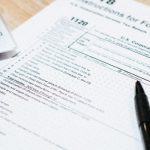Detecting Fraud in Mortgage and Loan Documents
Fraud in mortgage and loan documents is like a hidden enemy, camouflaging itself within the stacks of paperwork that define our financial transactions. From forged signatures to falsified income statements, fraud can take many forms and can have devastating consequences for individuals and institutions alike.
Our journey begins with exploring the red flags and warning signs that should raise suspicions when reviewing mortgage and loan documents. We’ll delve into real-world case studies, dissecting the tactics employed by fraudsters and the methods employed by investigators to uncover the truth.
Whether you’re a seasoned financial professional, a borrower navigating the complexities of loans and mortgages, or someone keen on protecting financial integrity, this article promises to equip you with the knowledge to detect and combat fraud effectively.
Common Types of Fraud in Mortgage and Loan Documents
- Identity Fraud
One of the most prevalent forms of fraud involves identity theft. Fraudsters may use stolen personal information to apply for loans or mortgages under someone else’s name. Detecting identity fraud is essential to prevent loans from being issued to unauthorized individuals.
- Income Fraud
Borrowers sometimes exaggerate their income to qualify for larger loans. To detect fraudulent claims, lenders must verify income information through pay stubs, tax returns, and employment verification.
- Occupancy Fraud
In mortgage applications, borrowers may falsely claim that they intend to live in the property as their primary residence to obtain more favorable terms. If the property is actually an investment or a second home, it can constitute fraud.
- Appraisal Fraud
Inflating property appraisals is another common form of fraud. Fraudsters may collude with appraisers to overvalue the property, making it appear more valuable than it actually is.
- Loan Application Fraud
Falsifying information on loan applications, such as assets, liabilities, or employment history, is a common form of fraud. Borrowers may provide inaccurate information to improve their chances of loan approval.
Methods for Detecting Fraud
Detecting fraud in mortgage and loan documents requires a combination of thorough documentation review and the use of technology and data analysis. Here are some effective methods:
- Document Verification
Lenders should carefully review all documents provided by borrowers. This includes checking identification, verifying income sources, and ensuring that signatures match official records.
- Credit Reports
Credit reports can reveal inconsistencies in a borrower’s financial history. Lenders should look for multiple inquiries, recent credit openings, or unusual changes in credit scores that may indicate identity theft or fraudulent activities.
- Employment Verification
Contacting employers directly to verify an applicant’s employment status and income is crucial. Fraudulent applicants may provide fake employment information that can be exposed through direct verification.
- Income Verification
Requesting income documentation, such as tax returns and pay stubs, can help verify the accuracy of income claims. Cross-referencing this information with bank statements can reveal inconsistencies.
- Automated Fraud Detection Systems
Many lenders use automated systems that analyze loan applications and supporting documents for inconsistencies and red flags. These systems can flag applications that require further investigation.
- Property Appraisal Review
Lenders should scrutinize property appraisals to ensure they are accurate and not influenced by fraudulent practices. Comparing appraisals to recent sales of similar properties in the area can help identify inflated values.
- Fraud Analytics
Advanced analytics tools can detect patterns of fraud by analyzing large datasets. These tools can identify unusual behaviors or trends that may indicate fraudulent activity.
- Reporting Systems
Establishing a reporting system for suspected fraud can encourage employees and customers to report suspicious activity. Timely reporting can help prevent fraudulent loans from being approved.
- Training and Education
Providing ongoing training to employees about fraud detection and prevention is essential. Employees who are well-informed about common fraud schemes are better equipped to detect them.
Challenges in Detecting Fraud
While there are effective methods for detecting fraud in mortgage and loan documents, several challenges exist:
- Sophisticated Fraud Schemes
Fraudsters continually adapt and develop more sophisticated schemes, making detection more challenging.
- Data Privacy Concerns
Balancing the need for fraud detection with data privacy regulations can be complex. Lenders must ensure they comply with privacy laws when collecting and analyzing borrower information.
- Resource Constraints
Smaller lenders may have limited resources to invest in advanced fraud detection technology and training.
- False Positives
Automated fraud detection systems may generate false positives, flagging legitimate applications as suspicious. This can lead to delays and customer dissatisfaction.
Prevention is Key
While detecting fraud is crucial, preventing it from occurring in the first place is equally important. Here are some proactive steps that lenders and borrowers can take:
- Strong Passwords and Authentication: Borrowers should use strong passwords and secure authentication methods to protect their financial accounts and personal information.
- Secure Document Handling: Both lenders and borrowers should securely handle and store sensitive documents, such as tax returns and bank statements.
- Education and Awareness: Borrowers should be educated about the fraud risks and encouraged to report any suspicious activity promptly.
- Regular Credit Monitoring: Borrowers should regularly review their credit reports for inaccuracies and signs of unauthorized activity.
- Secure Communication: Lenders should use secure communication channels for sharing sensitive information with borrowers.
Conclusion
Our exploration into detecting fraud in mortgage and loan documents has unveiled the critical role of vigilance and expertise in preserving the integrity of financial transactions. We’ve embarked on a journey through a world where deception can lurk within the fine print of documents and where forensic experts serve as financial detectives.
Fraud detection in mortgage and loan documents is not just a matter of compliance; it’s a vital safeguard against financial wrongdoing that can have far-reaching consequences. We’ve witnessed how meticulous analysis, digital forensics, and a keen eye for inconsistencies are essential tools in unmasking fraudulent activities.
Furthermore, we’ve delved into the importance of collaboration between financial institutions, regulatory bodies, and forensic experts. This partnership ensures that fraud is swiftly detected, investigated, and brought to justice.
Looking ahead, the battle against fraud in mortgage and loan documents will continue to evolve as technology advances and fraudsters become more sophisticated. The need for expertise and vigilance will remain unwavering in this dynamic landscape.
Disclaimer: This article is for educational and entertainment purposes.


